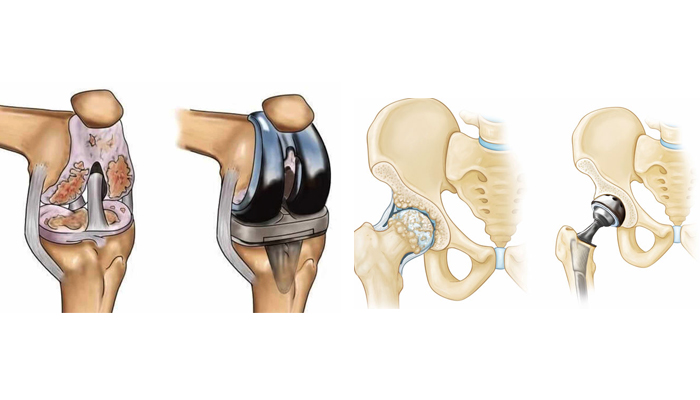
Joint replacement surgery is typically recommended for patients with advanced end stage joint disease (usually of the knee or the hip) who have tried non-surgical treatment, but still experience functional decline and disabling pain. Joint replacement is an extremely effective surgery when done at the right time and indication.
Modern joint replacement surgery involves removal of the worn cartilage from both sides of the joint, followed by resurfacing of the joint with a metal and plastic replacement implant that looks and functions much like your normal joint. Although nearly every joint in the body can be replaced, most replacement surgeries involve the hip or knee.
How To Diagnose Arthritis?
For nearly all patients, arthritis or other joint problems that are typically treated with joint replacement surgery can be diagnosed with simple x-rays. Other causes for hip or knee pain should be considered since referred back pain can be easily confused for pain associated with arthritis of the hip or knee, and pain from an arthritic hip can occasionally be referred to the knee. Inflammation of the soft tissue structures around the joint also can cause tendonitis or bursitis which can be confused with the pain associated with arthritis. A careful examination by your doctor and routine x-rays usually can determine the actual cause of your pain.
Prevention And Treatment
Your need for joint replacement surgery can be minimized by comprehensive medical treatment of your arthritis. Arthritis medications, exercise modification to low impact activities (e.g. swimming, walking, biking, etc.), weight loss, nutritional supplements, and joint injections can help you live with your arthritis for as long as possible. When these treatments are no longer effective and you experience pain as well as decrease in function, joint replacement surgery can relieve the pain and restore the quality of life lost due to arthritis.
Despite improvement in total joint replacement surgery, these operations are not likely to last a lifetime in young, active patients with arthritis. In some of these cases, joint preserving procedures such as osteotomies (removal of dead bone and repositioning of bone), joint debridement or “cleanouts,” and cartilage transplantation may be helpful in delaying joint replacement surgery.

